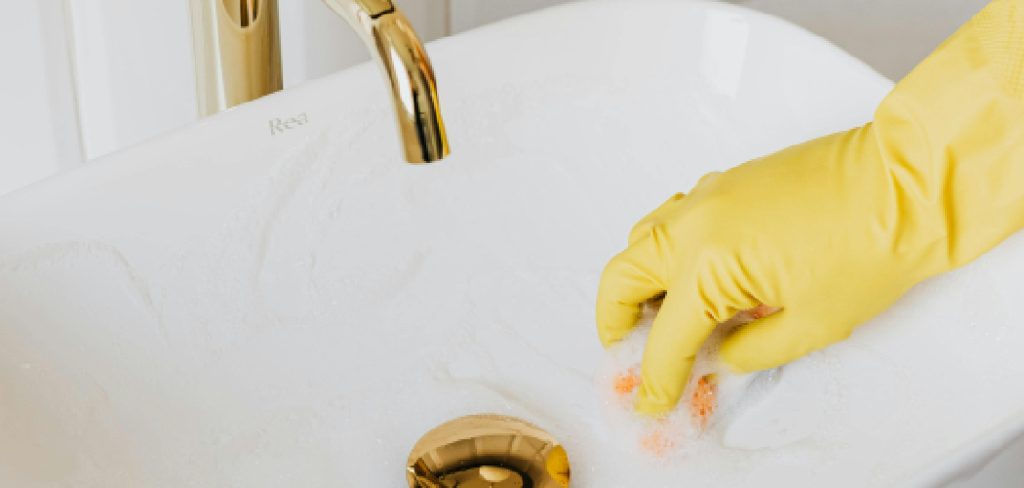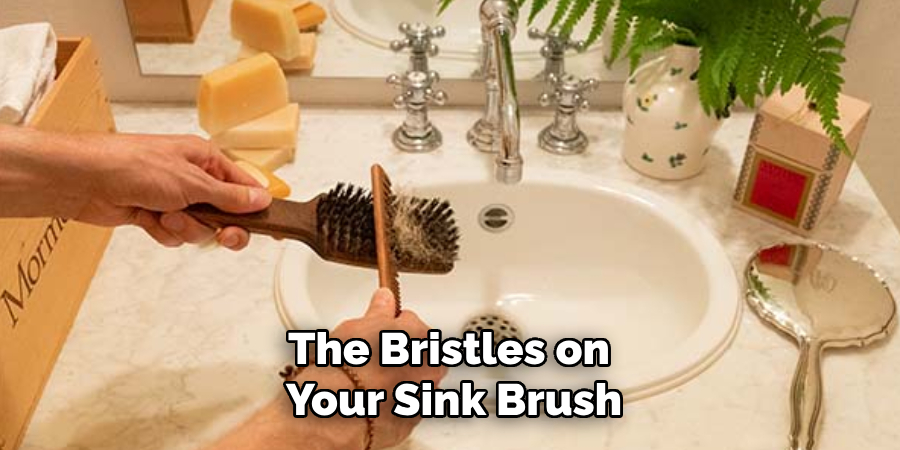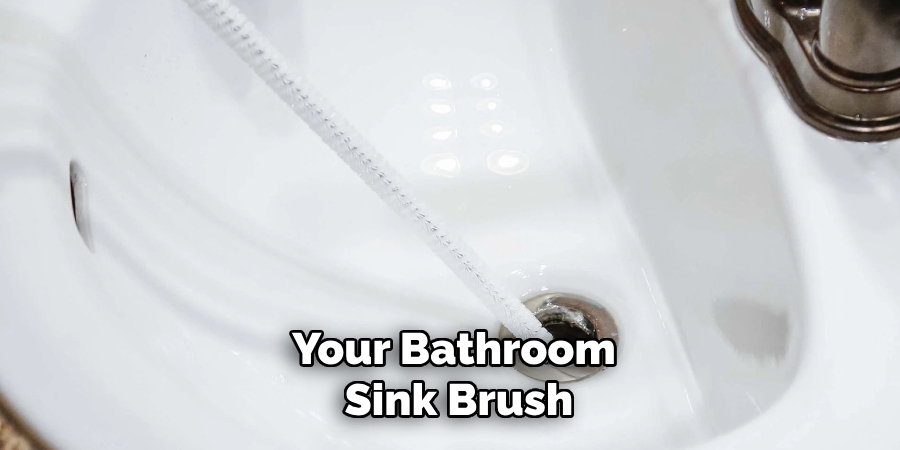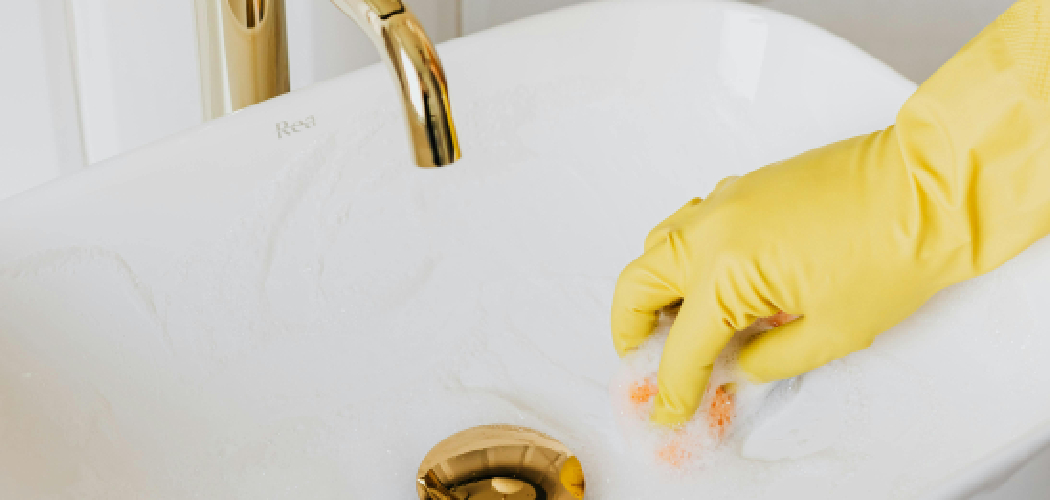Keeping your bathroom sink clean is essential for maintaining both hygiene and aesthetics. A good sink brush can make all the difference, allowing you to tackle stains, grime, and hard-to-reach areas with ease. With so many options available, choosing the right sink brush may feel overwhelming.

This guide on How to choose the best bathroom sink brush will help you identify the key factors to consider, ensuring that you find the perfect brush to keep your bathroom sink spotless and sparkling.
Why Do You Need a Bathroom Sink Brush?
Before we dive into the details of choosing the best bathroom sink brush, let’s quickly go over why it is necessary to have one in the first place.
Keeps Your Sink Clean:
The most obvious benefit of having a bathroom sink brush is that it helps keep your sink clean and free from buildup. Regularly using a sink brush can prevent stains, soap scum, and other grime from accumulating on your sink surface. By regularly scrubbing your sink with a brush, you can maintain a sparkling and hygienic bathroom.
Reaches Difficult Areas:
Sink brushes are designed to reach deep into the corners and crevices of your sink, making it easier to clean those hard-to-reach areas. They can also help dislodge any debris or buildup that may have accumulated in these tight spaces.
Multi-Purpose Use:
A good quality bathroom sink brush is not just limited to cleaning sinks; it can also be used for other cleaning tasks around the house. You can use it to scrub tiles, grout lines, and even hard-to-reach areas in your shower or bathtub.
Needed Materials
When choosing a bathroom sink brush, there are a few key materials to keep in mind. These materials can affect the effectiveness and durability of the brush.
Bristles:
The bristles on your sink brush should be sturdy enough to scrub away grime but not too rough that they scratch or damage your sink surface. Natural bristles, such as boar hair, are gentle and effective on a variety of surfaces. Synthetic bristles, like nylon or silicone, can also be durable and gentle on your sink.
Handle:
The handle of your brush should be comfortable to hold and easy to grip. Look for one with non-slip material or a textured design that ensures you have a good grip even when your hands are wet.
Material of the Brush:
The material used to make the brush itself can affect its durability and effectiveness. Stainless steel handles are sturdy and resistant to rust, making them ideal for bathroom use. Plastic handles may not be as durable, but they can still work well for light cleaning tasks.

8 Step-by-step Guidelines on How to Choose the Best Bathroom Sink Brush
Step 1: Identify Your Needs
The first step in choosing the best bathroom sink brush is to identify your specific cleaning needs. Consider the type of sink you have, as different materials may require different types of brushes. For example, porcelain or ceramic sinks may benefit from a brush with softer bristles to avoid scratches, while stainless steel sinks may require firmer bristles to tackle stubborn stains.
Additionally, think about the level of grime or buildup in your sink and how often you plan to use the brush. Identifying these factors will help narrow down your options and ensure you select a brush that fits your cleaning routine and sink type perfectly.
Step 2: Consider the Bristle Type
As mentioned earlier, the bristles on your sink brush can make a big difference in how well it cleans and protects your sink surface. For delicate surfaces, opt for soft natural bristles, while tougher materials may require sturdier synthetic bristles. You should also consider the shape of the bristles; flat or angled bristles may be more effective at reaching corners and crevices.
But be careful not to choose a brush with bristles that are too hard, as they can damage your sink surface or cause scratches.
Step 3: Decide on the Handle Material and Design
The handle is an essential aspect of your bathroom sink brush, as it determines how comfortable and effective it will be to use. Choose a material that feels sturdy and durable in your hands, such as stainless steel or plastic with a non-slip grip. The shape of the handle should also allow for easy maneuvering and control when scrubbing.
It’s also worth considering the length of the handle; longer handles may provide better reach, while shorter handles can be easier to maneuver in tight spaces.

Step 4: Check the Brush Size
The size of your brush should correspond to the size of your sink. For larger sinks, you may need a bigger brush head to cover more surface area in less time. Smaller brushes are ideal for small sinks or for tackling specific areas like faucets and drains.
The brush head shape can also impact how well it cleans; a round head may be better for cleaning sinks with curved edges, while a flat or angled head may work better on square or rectangular sinks.
Step 5: Assess the Brush Quality
When investing in a bathroom sink brush, it’s crucial to consider its quality and durability. Look for brushes made with high-quality materials that are built to last. Read reviews or ask for recommendations from friends and family to ensure you’re getting a reliable product.
It’s also worth checking if the brush comes with any warranty or guarantees to ensure your satisfaction.
Step 6: Determine Your Budget
Bathroom sink brushes can range in price from a few dollars to more expensive options. Consider how much you are willing to spend on a brush and try to find one that meets your needs within that budget. Remember, higher prices don’t always equate to better quality, so do your research and compare prices before making a decision.
You can also look for discount deals or sales to get a good quality brush at a lower price.
Step 7: Read Reviews and Recommendations
Before making a final decision, it’s always helpful to read reviews and recommendations from others who have used the brush. This can give you valuable insights into the effectiveness and durability of the product, as well as any potential issues to watch out for.
You can also ask friends and family for their recommendations or check online forums and social media groups for suggestions.
Step 8: Make Your Purchase
Once you’ve considered all these factors, it’s time to make your purchase! Whether you choose to buy in-store or online, make sure to carefully follow any instructions or precautions for using and maintaining your bathroom sink brush to ensure its effectiveness and longevity. With the right brush, your bathroom sink will be sparkling clean in no time!
Following these guidelines will ensure you choose the best bathroom sink brush for your specific needs and preferences, making cleaning your sink a breeze. Remember to regularly replace your brush as needed and keep it clean to maintain its effectiveness and prolong its lifespan. Happy brushing!

Additional Tips for Using Your Bathroom Sink Brush
- Before using the brush, wet the bristles with water to soften them and make cleaning easier.
- Use a gentle cleaner or solution when scrubbing your sink to avoid damaging the surface.
- Rinse off any residue or particles on the brush after each use.
- For tougher stains or buildup, let the cleaner sit on the surface for a few minutes before scrubbing with the brush.
- To prevent mold or bacteria growth on your brush, allow it to air dry completely before storing.
- Consider using separate brushes for different purposes, such as one for general sink cleaning and another for scrubbing the drain.
By following these tips and guidelines on How to choose the best bathroom sink brush, you can keep your bathroom sink clean and hygienic with the help of a high-quality, well-chosen brush. Happy cleaning!
Frequently Asked Questions
Q: How Often Should I Replace My Bathroom Sink Brush?
A: It’s recommended to replace your brush every 3-6 months or when you notice the bristles starting to wear down. This ensures effective cleaning and prevents the spread of bacteria.
Q: Can I Use a Regular Kitchen Sink Brush in My Bathroom?
A: While it may seem like a simple solution, using a kitchen sink brush in your bathroom can lead to cross-contamination of germs and bacteria. It’s best to use a separate brush specifically designed for bathroom sinks.
Q: How Do I Clean My Bathroom Sink Brush?
A: Rinse off any residue or particles on the brush after each use and allow it to air dry completely before storing. You can also soak the brush in warm water with some gentle cleaner to remove any buildup or stains. Make sure to rinse thoroughly afterward.
Q: Are There Any Special Precautions I Should Take When Using a Bathroom Sink Brush?
A: Yes, always follow the instructions and precautions provided with your brush to ensure safe and effective use. Avoid using harsh chemicals or abrasive cleaners on the brush, as this can damage the bristles or handle material.
Q: Can I Share My Bathroom Sink Brush with Others?
A: It’s generally not recommended to share personal hygiene items, including bathroom sink brushes, as they can spread germs and bacteria. Each person should have their own designated brush for personal use.

Conclusion
Choosing the right bathroom sink brush may seem like a small task, but it can greatly impact the cleanliness and functionality of your sink. By considering factors such as brush size, quality, and budget, as well as reading reviews and recommendations, you can find the perfect brush for your needs.
Remember to use your brush properly and maintain it regularly for optimal results. Thanks for reading this article on How to choose the best bathroom sink brush.

